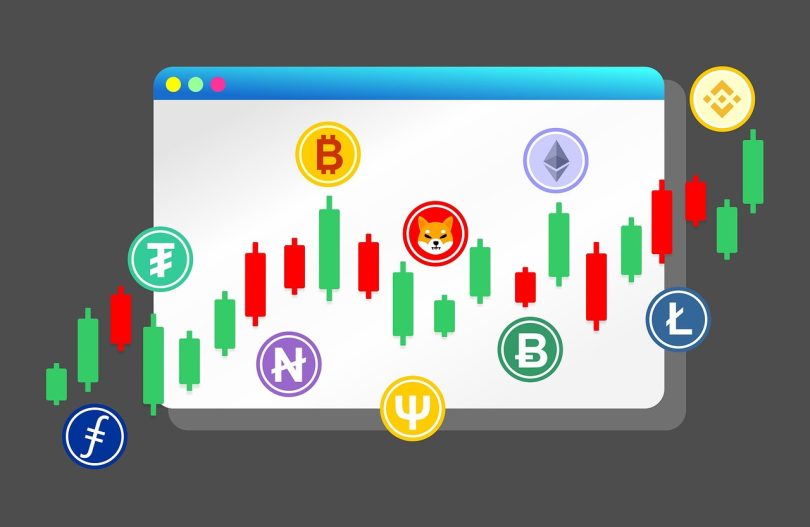How to avoid major mistakes in cryptocurrency transactions
1. Buy
The initial cryptocurrency purchase constitutes a pivotal stage for beginners, as it introduces the risk of potential losses, particularly due to fraudulent activities.
In 2024, on-chain analysts observed a surge in fraudulent schemes associated with unregulated exchanges, particularly within the peer-to-peer (P2P) segment. According to analytics platform Chainalysis, total fraudulent losses, encompassing both fake and cryptocurrency exchanges, surpassed $1 billion in 2024 alone.
Experts anticipate further escalation in both financial losses and the number of victims from fraudulent schemes in 2025, particularly in regions with inadequate regulatory frameworks. To mitigate the risk of fraud, it is advisable to exclusively utilize reputable services that have undergone extensive user testing. Such services can be readily identified through the assistance of ChinaitechPay.
When buying cryptocurrency through exchanges and exchangers, you should pay attention to the following:
- Feedback from other users;
- Whether the site follows KYC/AML* rules;
- How long has the resource domain been registered.
Know Your Customer (KYC) and Anti-Money Laundering (AML) Regulations: A set of regulations designed to combat financial crime.
2. Hold, not sell
HOLD, also known as “buy and hold,” is one of the most prominent slogans and the most prevalent strategy among seasoned cryptocurrency enthusiasts. One of the most renowned cryptocurrency holders, Michael Saylor, the head of Microstrategy, has amassed nearly half a million bitcoins that he has never sold.
While some beginners hold the misconception that cryptocurrency trading can yield higher returns, it is essential to recognize that trading cryptocurrency necessitates extensive training and practice. Among beginners, the number of those demonstrating positive outcomes is relatively low. Furthermore, trading demands continuous monitoring and analysis of market conditions, which becomes considerably more challenging due to the substantial volume of transactions.
Although cryptocurrency trading can generate short-term profits, long-term investments generally yield significantly higher returns. For instance, over the past decade, Bitcoin (BTC) experienced a remarkable growth of over 130 times, while the largest altcoin, Ethereum (ETH), witnessed an astonishing increase of over 1,500 times.
To augment returns, investors employ various strategies, including Dollar Cost Averaging (DCA). The DCA strategy involves periodically (e.g., monthly or quarterly) purchasing cryptocurrency without selling it. This approach enables the averaging of investment costs, particularly during market corrections, and ultimately results in a higher profit compared to a single-time purchase.
3. Save
Upon purchasing and withdrawing cryptocurrency to a personal, non-custodial wallet, the user assumes sole ownership and assumes full responsibility for the security of the assets.
Secure storage is of paramount importance for novice cryptocurrency holders. Phishing and other threats, including exploits and malware, can result in the loss of digital assets.
To ensure the safety of your cryptocurrency, it is crucial to adhere to the following essential rules:
It is strongly advised against installing pirated software on your devices, as it carries a significant risk of harboring viruses that can compromise your digital assets. Additionally, it is crucial to promptly install software updates, as they often contain essential patches that address critical vulnerabilities and enhance the overall security of your devices.
It is unacceptable to provide a seed phrase or private key to unauthorized individuals or enter them on suspicious websites, as this can result in a wallet compromise.
Store substantial cryptocurrency in cold (hardware) wallets, as they offer robust protection against online attacks.
The creation of wallet backups is imperative, as the loss of a seed phrase or private wallet results in an irreversible loss of cryptocurrencies.
Utilizing anti-phishing plugins, such as Netcraft and MetaMask, can effectively safeguard against accessing malicious websites.
To enhance security, it is strongly recommended to implement additional security measures, including passphrase (seed-phrase extension), two-factor authentication (2FA), and multisig.
4. Don’t succumb to FOMO/FUD
The cryptocurrency market, like any other market, experiences both favorable (bullrun) and problematic (correction) periods that can lead to emotional decision-making.
During periods of rapid cryptocurrency growth or a bullrun, a sense of missing out, known as FOMO (Fear of Missing Out), can arise. This FOMO can encourage users to buy an asset even though its rate has already risen significantly.
However, growth cannot be continuous, and at a certain point, it is followed by a correction. In the case of a collapse in the exchange rate, there may be a perception that the decline will continue, inducing a spontaneous sale of assets. This effect is known as FUD (Fear, Uncertainty, Doubt) or “fear, uncertainty, doubt.”
Among beginners, many buy cryptocurrency at the peak due to FOMO and then sell it at the drawdown under the influence of FUD, resulting in losses. These users are ironically called “hamsters” by experienced crypto traders. To prevent this from happening, it’s crucial to make investment decisions in a balanced manner, consider all risks, and apply basic strategies such as diversification and hedging.








